Page 3
ATLAS Collab.
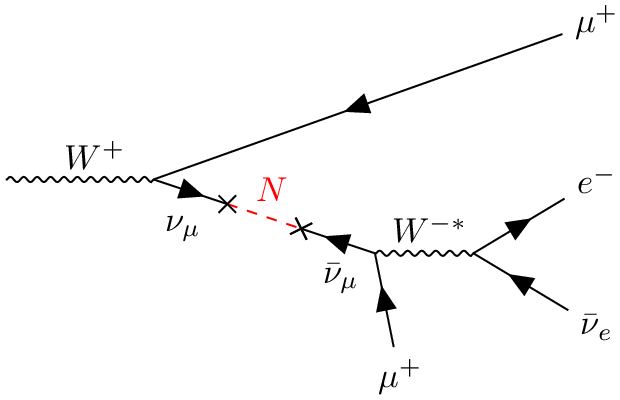
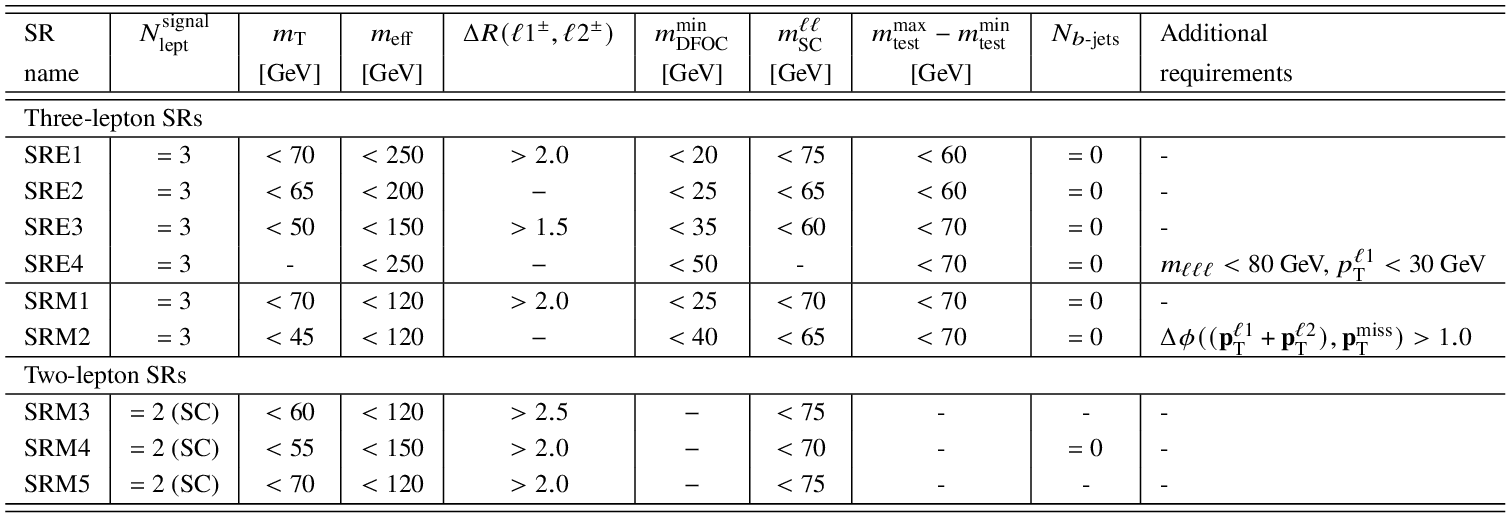
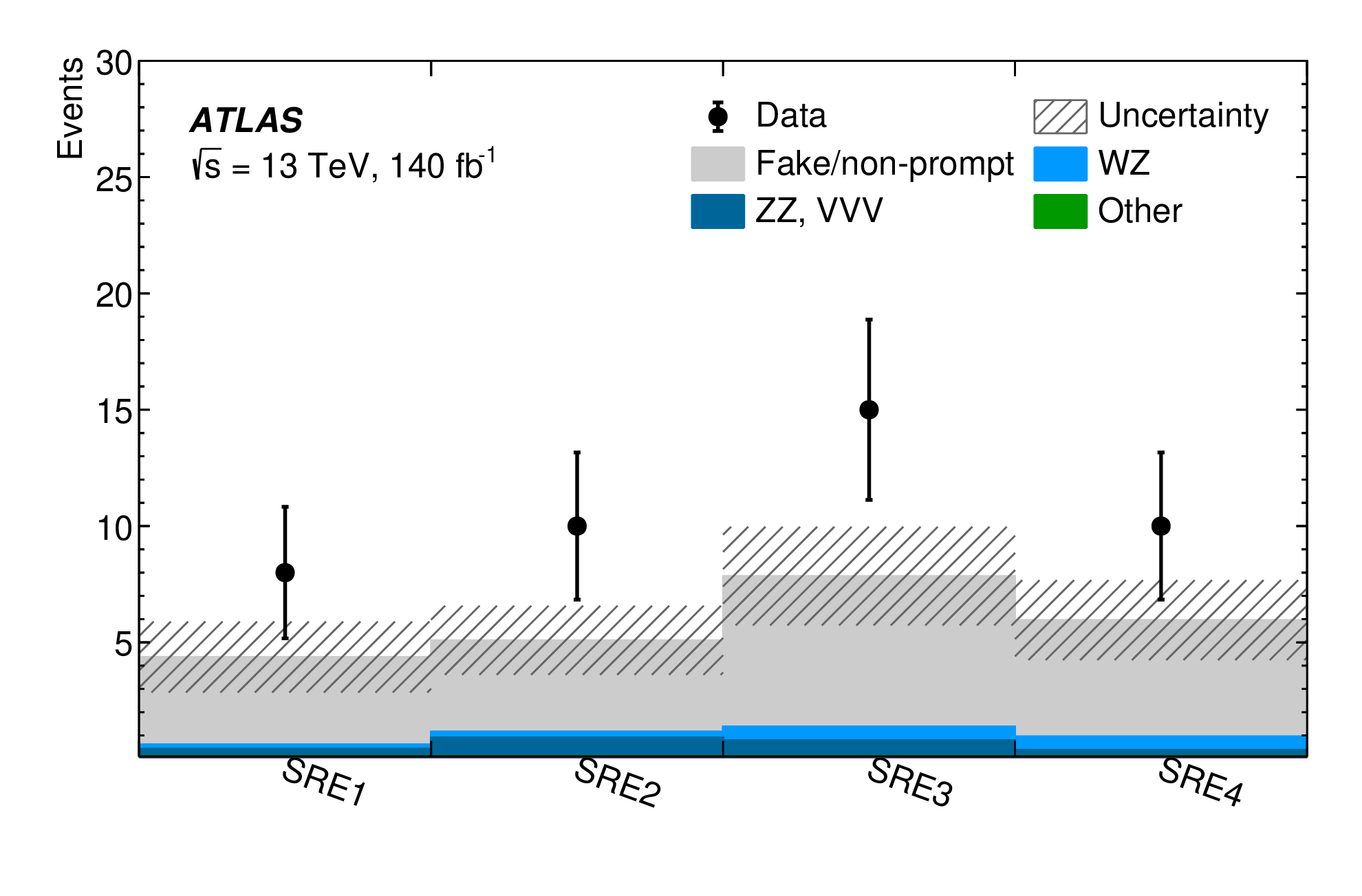
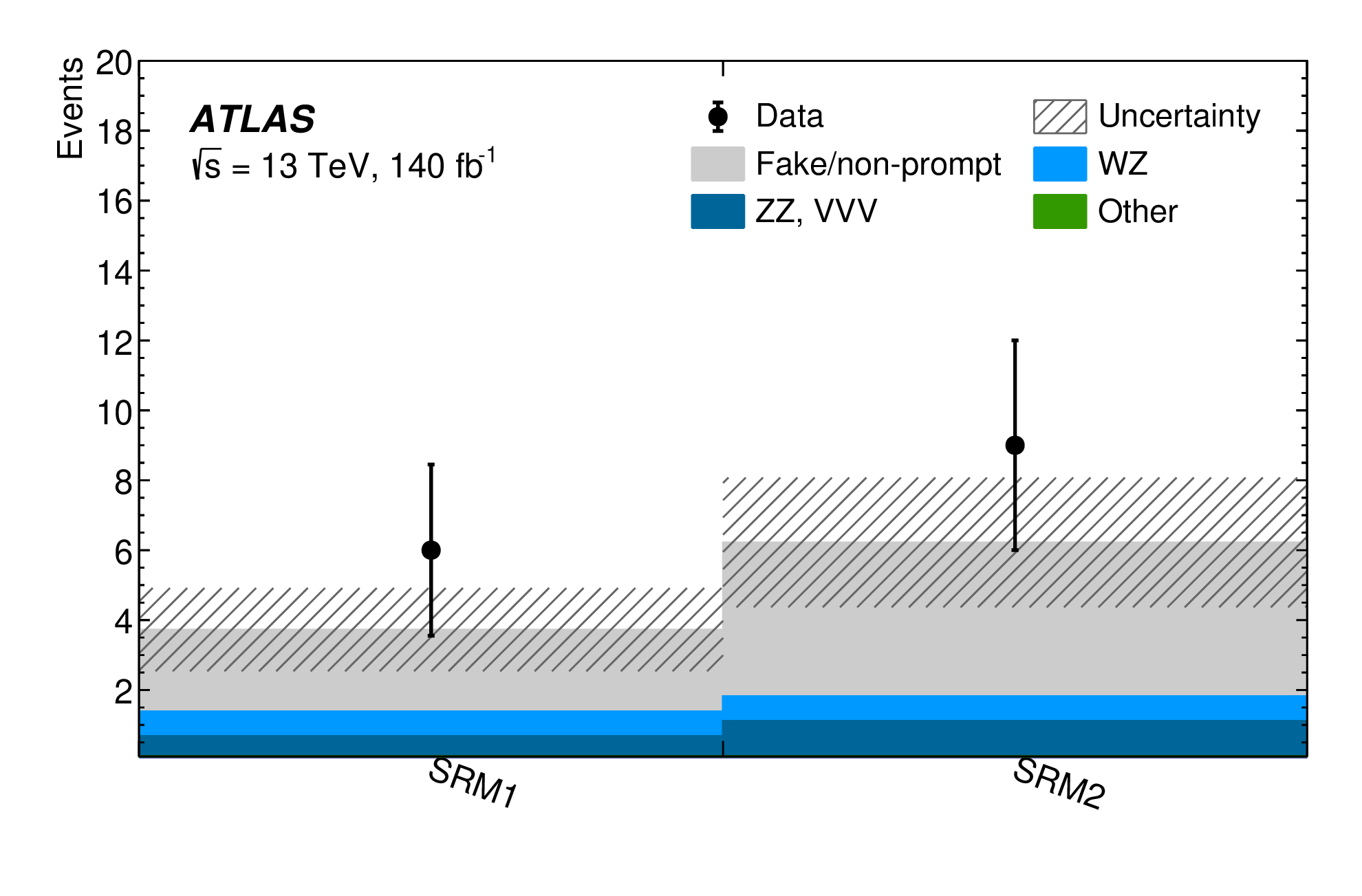
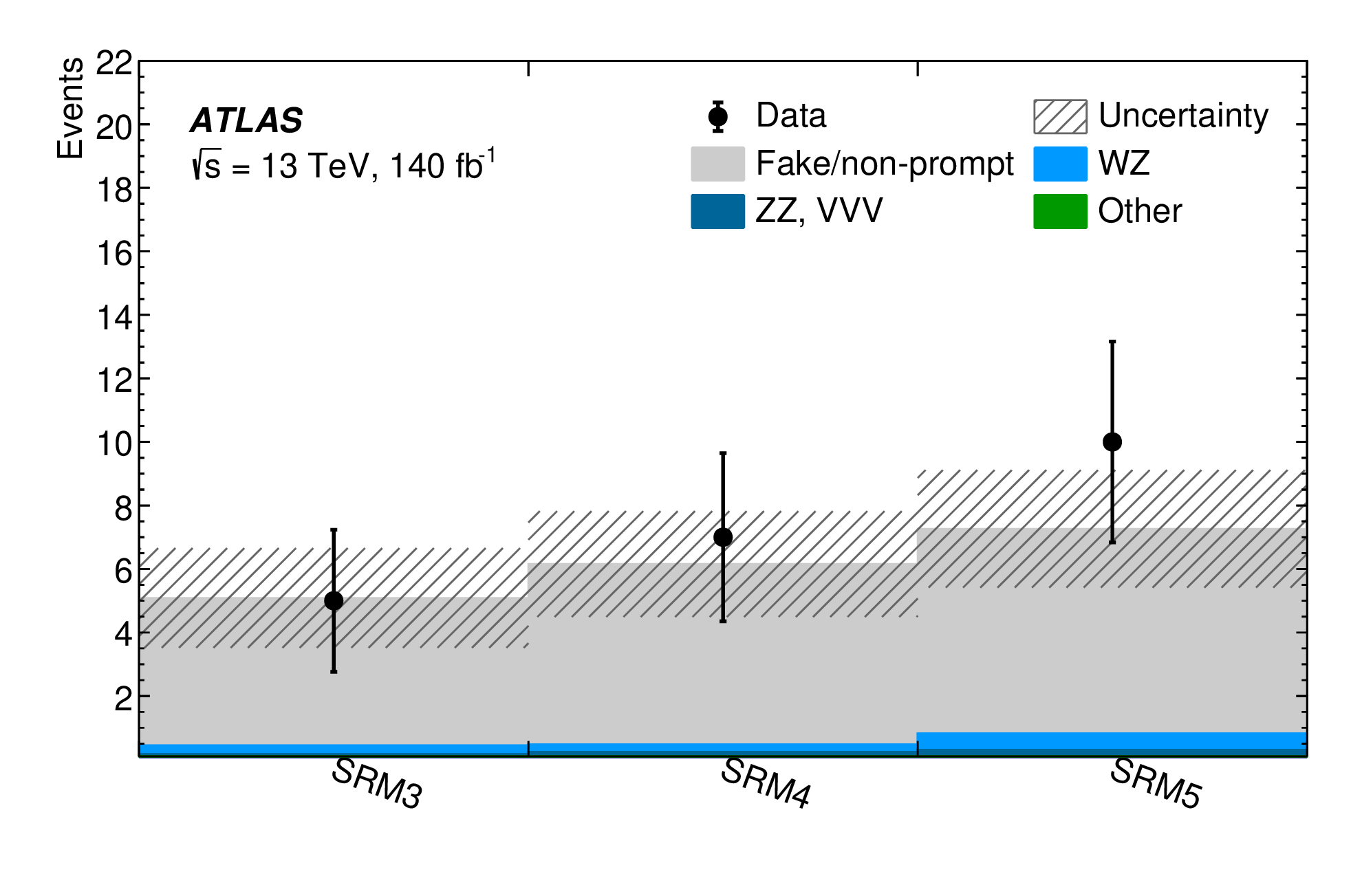
Page 1
Sep 4th, 2025
Page 2
ATLAS Collab.
Search for heavy neutral leptons in decays of W bosons produced in 13 TeV pp collisions using prompt signatures in the ATLAS detector
The existence of right-handed neutrinos with Majorana masses below the electroweak scale could help address the origins of neutrino masses, the matter-antimatter asymmetry, and dark matter. In this paper, leptonic decays of W bosons from 140 fb-1 of 13 TeV proton-proton collisions at the LHC, reconstructed in the ATLAS experiment, are used to search for heavy neutral leptons produced through their mixing with muon or electron neutrinos in a scenario with lepton number violation. The search is conducted using prompt leptonic decay signatures. The considered final states require two same-charge leptons or three leptons, while vetoing three-lepton same-flavour topologies. No significant excess over the expected Standard Model backgrounds is found, leading to constraints on the heavy neutral lepton's mixing with muon and electron neutrinos for heavy-neutral-lepton masses. The analysis excludes |Ue|2 values above 8 x 10-5 and |Uμ|2 values above 5.0 x 10-5 in the full mass range of 8-65 GeV. The strongest constraints are placed on heavy-neutral-lepton masses in the range 15--30 GeV of |Ue|2 < 1.1 x 10-5 and |Uμ|2 < 5 x 10-6
Page 3
ATLAS Collab.





Page 4
ATLAS Collab.
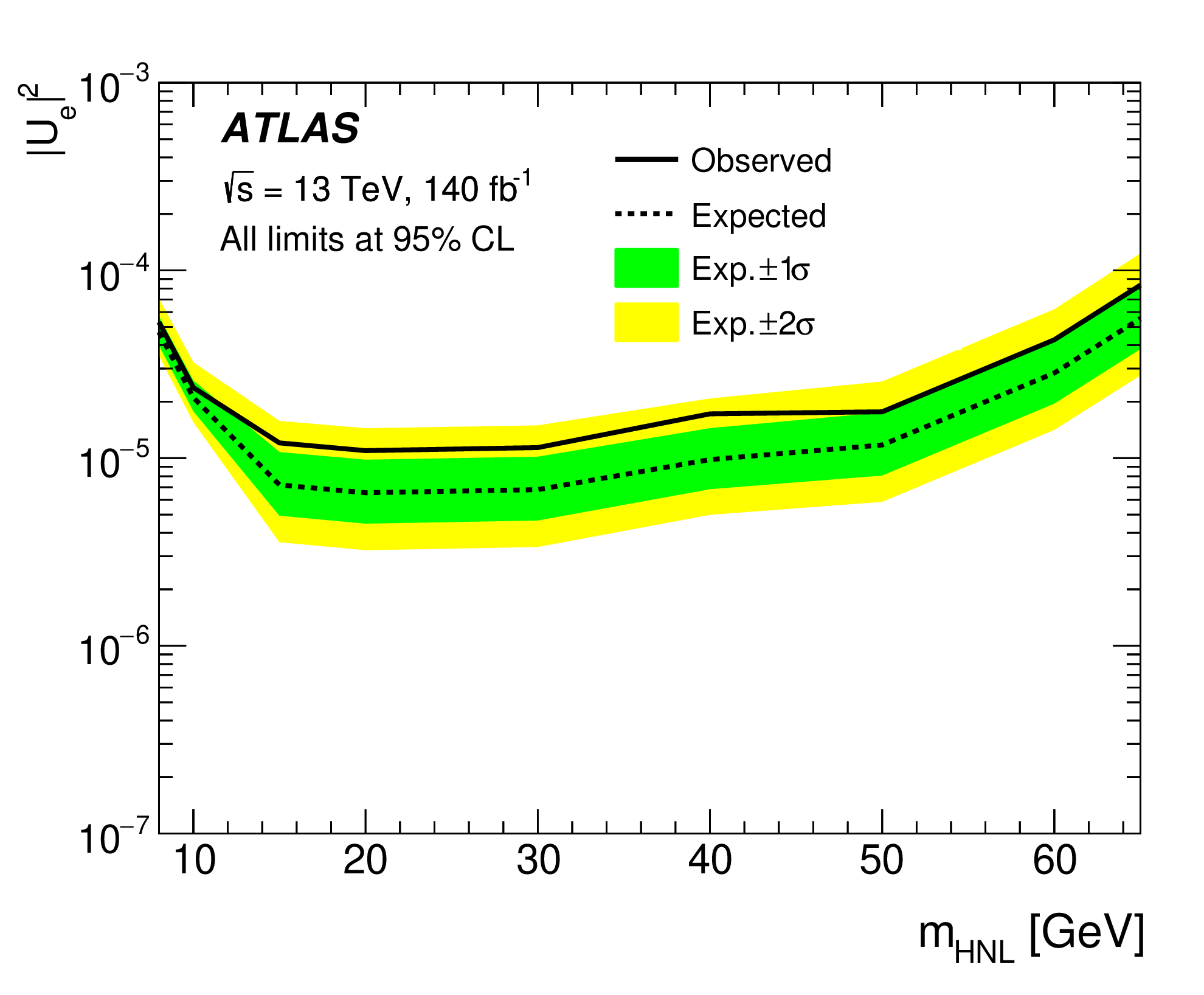
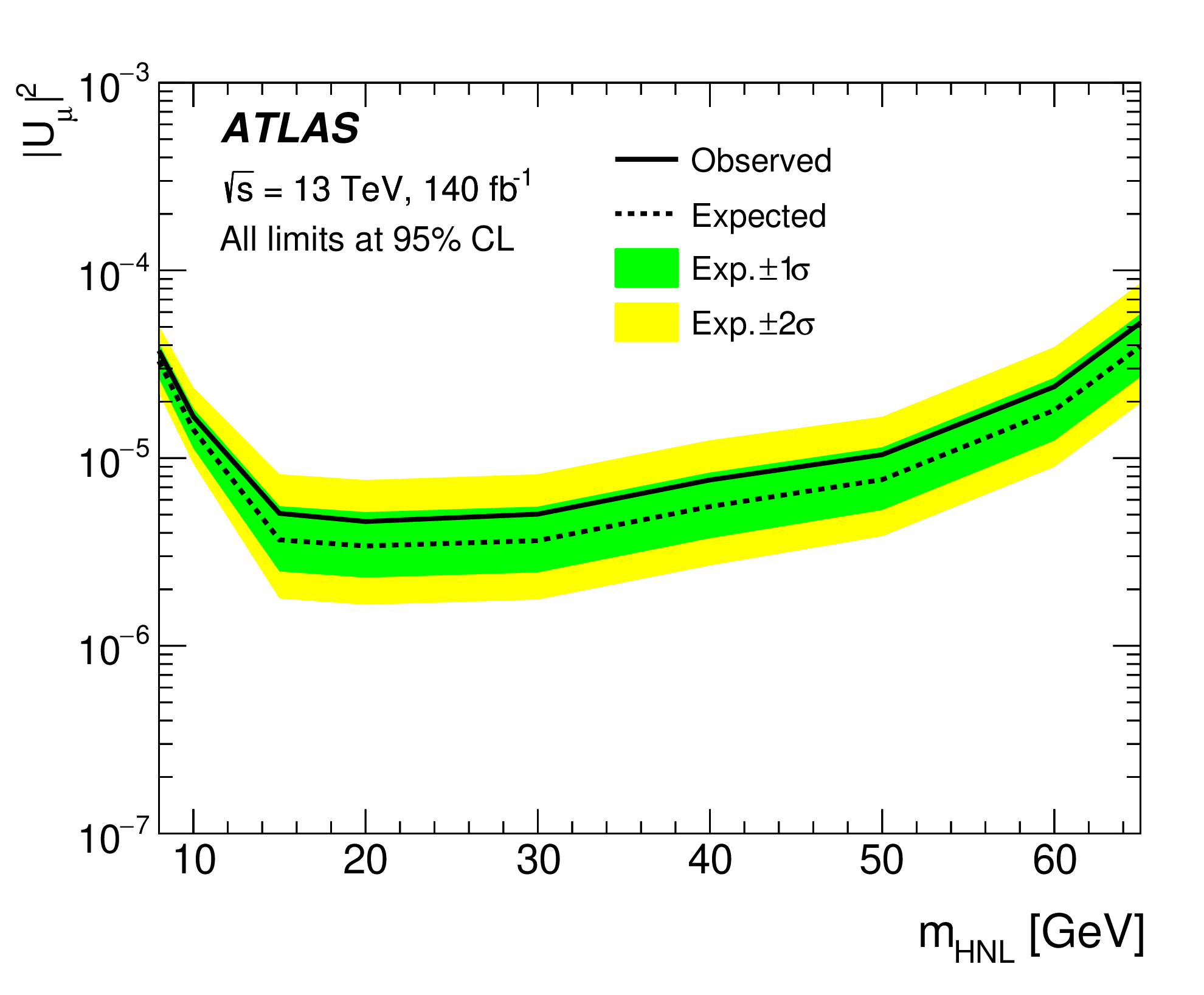
Page 5
ATLAS Collab.
Search for electroweak-scale dijet resonances using trigger-level analysis with the ATLAS detector in 132 fb-1 of pp collisions at √s=13 TeV
This article reports on a search for dijet resonances using 132 fb-1 of collision data recorded at √s=13 TeV by the ATLAS detector at the Large Hadron Collider. The search is performed solely on jets reconstructed within the ATLAS trigger to overcome bandwidth limitations imposed on conventional single-jet triggers, which would otherwise reject data from decays of sub-TeV dijet resonances. Collision events with two jets satisfying transverse momentum thresholds of pT > 85 GeV and jet rapidity separation of |y*|<0.6 are analysed for dijet resonances with invariant masses from 375 to 1800 GeV. A data-driven background estimate is used to model the dijet mass distribution from multijet processes. No significant excess above the expected background is observed. Upper limits are set at 95% confidence level on coupling values for a benchmark leptophobic axial-vector Z’ model and on the production cross-section for a new resonance contributing a Gaussian-distributed line-shape to the dijet mass distribution.
Page 6
ATLAS Collab.
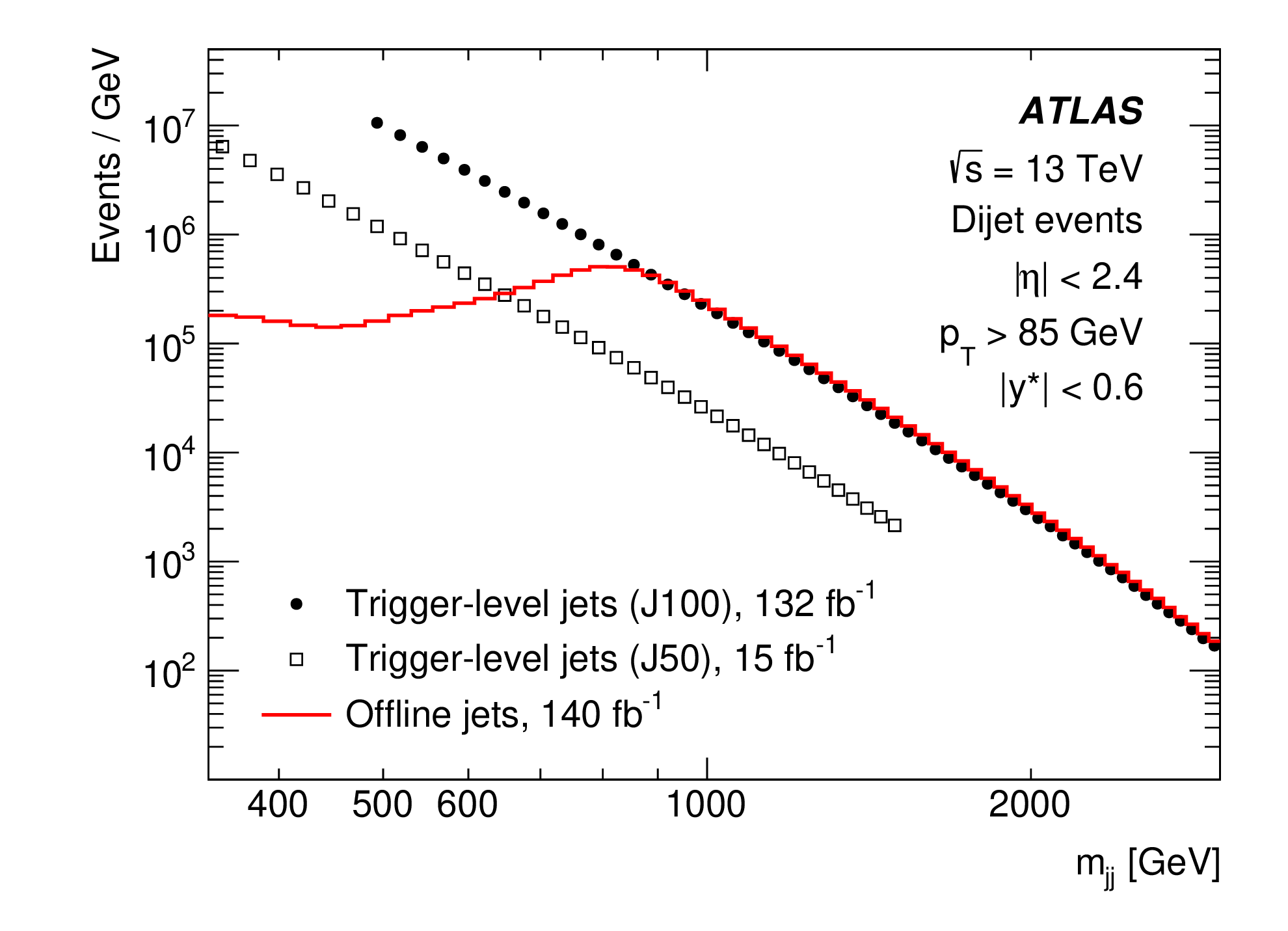
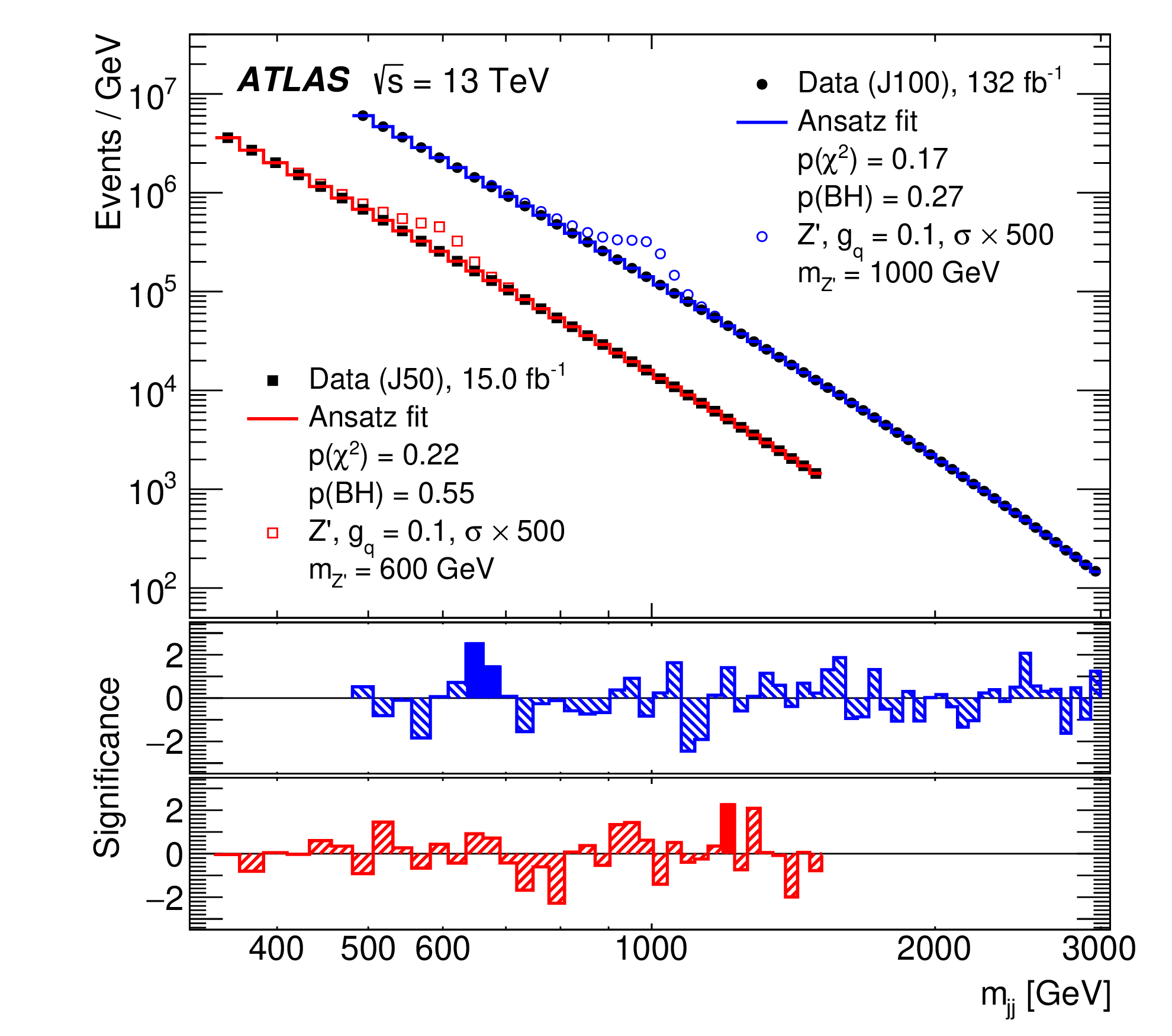
Page 7
ATLAS Collab.
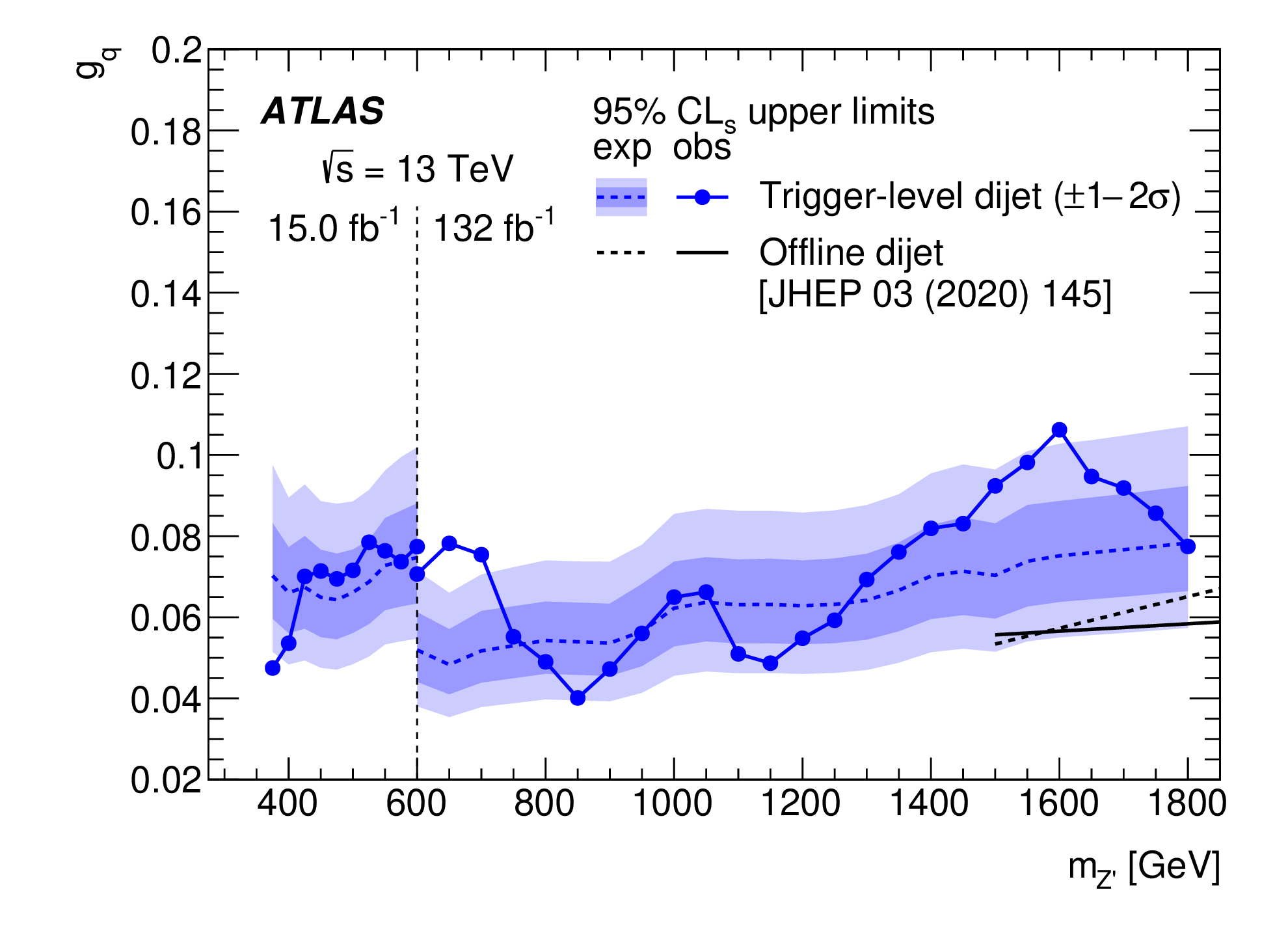
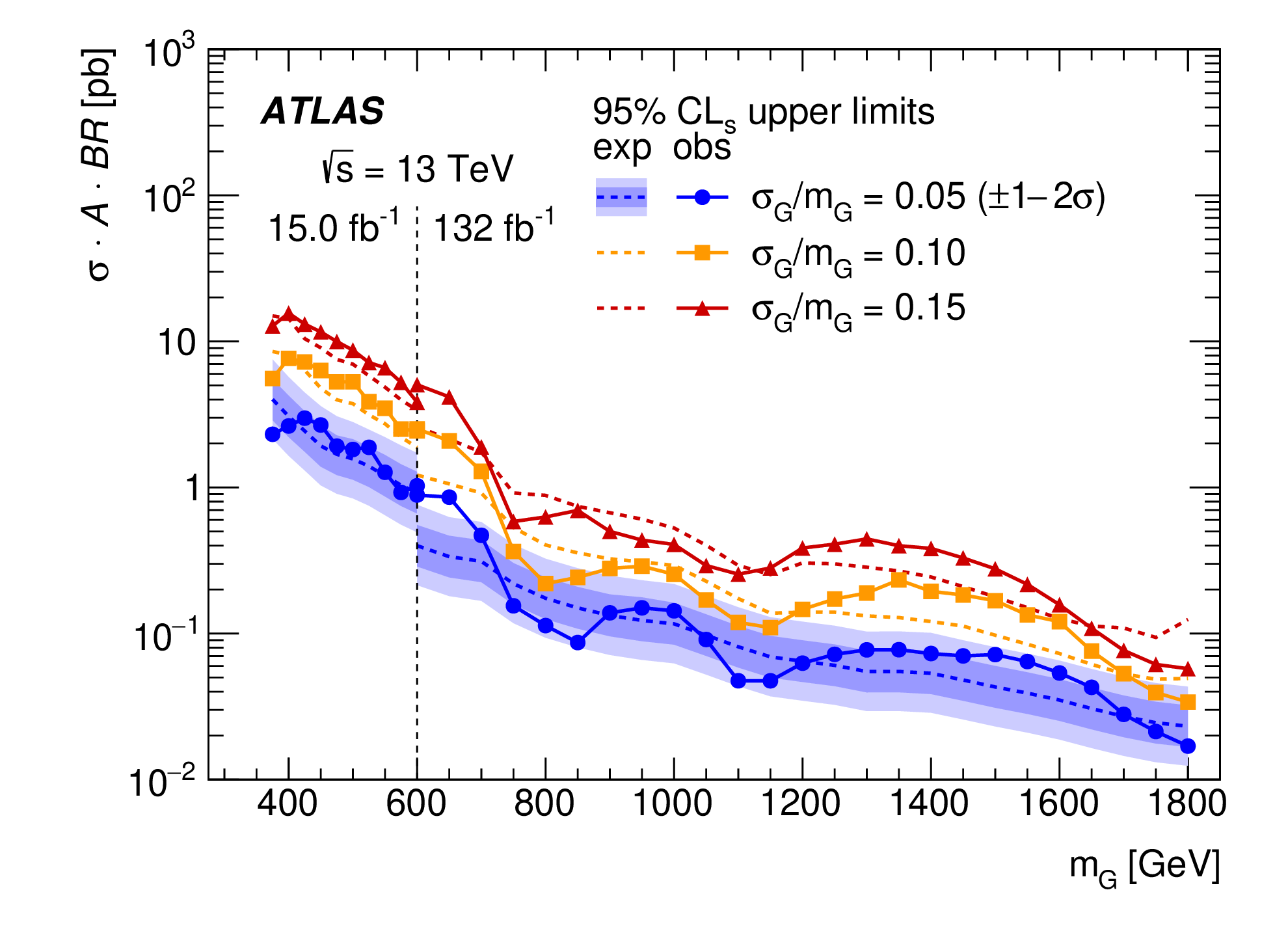
Page 8
Machine learning driven identification of heavy flavor decay leptons in proton-proton collisions at the Large Hadron Collider
R. Sahoo, K. Goswami, S. Prasad
The study of heavy-flavor hadrons is topical in the era of precision measurements, which is useful to test theories based on pQCD. The heavy-flavor hadrons are produced initially during heavy-ion or hadronic collisions and are one of the best probes to understand the initial stages of the collisions as well as the system evolution. In experiments, the heavy-flavor sectors are studied directly via their decay to different hadrons or di-leptons or via their semi-leptonic decay, which is accompanied by additional neutrinos. However, their measurement in experiments is resource-intensive and requires input from different Monte-Carlo event generators. In this study, we provide an independent method based on Machine Learning algorithms to separate such leptons coming from heavy-flavor semi-leptonic decays. We use PYTHIA8 to generate events for this study, which gives a good qualitative and quantitative description of heavy-flavor production in collisions. We use the XGBoost model for this study, which is trained with pp collisions at √s=13.6 TeV. We use DCA, pseudorapidity, and transverse momentum as the input to the machine. The ML model provides an accuracy of 98% for heavy-flavor decay electrons and almost 100% for heavy-flavor decay muons.